
Highland is a council area in the Scottish Highlands and is the largest local government area in the United Kingdom. It was the 7th most populous council area in Scotland at the 2011 census. It has land borders with the council areas of Aberdeenshire, Argyll and Bute, Moray and Perth and Kinross. The wider upland area of the Scottish Highlands after which the council area is named extends beyond the Highland council area into all the neighbouring council areas plus Angus and Stirling.

Sorley MacLean was a Scottish Gaelic poet, described by the Scottish Poetry Library as "one of the major Scottish poets of the modern era" because of his "mastery of his chosen medium and his engagement with the European poetic tradition and European politics". Nobel Prize Laureate Seamus Heaney credited MacLean with saving Scottish Gaelic poetry.

Cromarty is a town, civil parish and former royal burgh in Ross and Cromarty, in the Highland area of Scotland. Situated at the tip of the Black Isle on the southern shore of the mouth of Cromarty Firth, it is 5 miles (8 km) seaward from Invergordon on the opposite coast. In the 2001 census, it had a population of 719.

Plockton is a village in the Lochalsh, Wester Ross area of the Scottish Highlands with a 2020 population of 468.

Tain is a royal burgh and parish in the County of Ross, in the Highlands of Scotland.
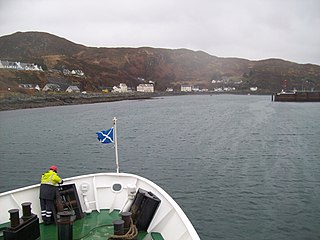
Mallaig is a port in Morar, on the west coast of the Highlands of Scotland. It faces Skye from across the Sound of Sleat. The local railway station is the terminus of the West Highland Line, and the town is linked to Fort William by the A830 road – the "Road to the Isles".
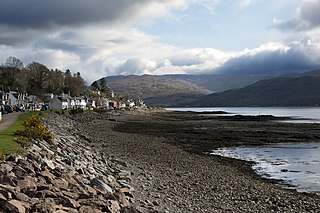
Lochcarron is a village, community and civil parish in the Wester Ross area of Highland, Scotland. It has a population of 923.
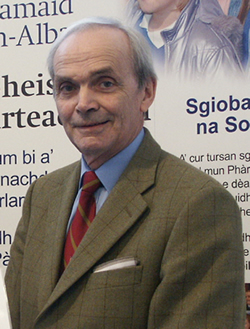
John Farquhar Munro was a Scottish Liberal Democrat politician. He was the Member of the Scottish Parliament (MSP) for Ross, Skye and Inverness West from 1999 until his retirement in 2011.

Eleanor Roberta Scott is a Scottish politician and physician. She was Scottish Greens Member of the Scottish Parliament (MSP) for the Highlands and Islands from 2003–2007, then female co-convener of the party from 2008–2011 with Patrick Harvie.
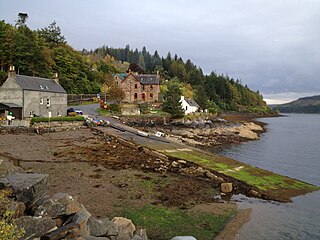
Stromeferry is a village, located on the south shore of the west coast sea loch, Loch Carron, in western Ross-shire, Scottish Highlands and is in the Scottish council area of Highland. Its name reflects its former role as the location of one of the many coastal ferry services which existed prior to the expansion of the road network in the 20th century.

Inverness Royal Academy is a comprehensive secondary school in the city of Inverness in the Highland area of Scotland.

Portree High School is a state co-educational comprehensive school in Portree, Isle of Skye in Scotland. As of 2020, the school enrols 494 pupils and employs 80 teachers and support staff. The school's catchment area draws from 15 primary schools across Skye and neighbouring Raasay. The school also has a hostel with boarding provisions for a small number of pupils who live in more remote areas of the island.

Lochaber High School is a six-year comprehensive secondary school located in the town of Fort William, Lochaber, in the Highland region of Scotland.
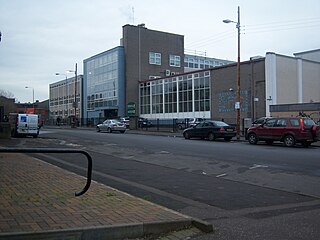
Scottish Gaelic-medium education, also known as Gaelic-medium education (GME), is a form of education in Scotland that allows pupils to be taught primarily through the medium of Scottish Gaelic, with English being taught as the secondary language.

The Isle of Skye, or simply Skye, is the largest and northernmost of the major islands in the Inner Hebrides of Scotland. The island's peninsulas radiate from a mountainous hub dominated by the Cuillin, the rocky slopes of which provide some of the most dramatic mountain scenery in the country. Although Sgitheanach has been suggested to describe a winged shape, no definitive agreement exists as to the name's origin.
James Mackenzie Fraser is a former university administrator who was the first principal and vice-chancellor of the University of the Highlands and Islands, in the north of Scotland. He held senior management roles in Scottish educational institutions for over 23 years, working at three colleges that went on to achieve University status.

Duncraig Castle is a mansion in Lochalsh, in the west of the Scottish Highlands. A category-C listed building, it is situated in the Highland council area, east of the village of Plockton on the south shore of Loch Carron. It was built in 1866 in the Scottish baronial style, to designs by Alexander Ross, for Scottish Member of Parliament and businessman Alexander Matheson. The castle remained in the Matheson family until the 1920s, when it was sold to Sir Daniel Hamilton and his wife Margaret, who owned the neighbouring estate. The Hamiltons intended to use the castle for educational purposes in the local community, but this never came to fruition and following the outbreak of World War II, the castle was used as a naval hospital. By the end of the war, Daniel Hamilton had died, and Margaret bequeathed the castle to the local council, which converted it for use as a home economics college for girls, operating in this capacity until its closure in 1989.

Lochalsh is a district of mainland Scotland that is currently part of the Highland council area. The Lochalsh district covers all of the mainland either side of Loch Alsh - and of Loch Duich - between Loch Carron and Loch Hourn, ie. from Stromeferry in the north on Loch Carron down to Corran on Loch Hourn and as (south-)west as Kintail. It was sometimes more narrowly defined as just being the hilly peninsula that lies between Loch Carron and Loch Alsh. The main settlement is Kyle of Lochalsh, located at the entrance to Loch Alsh, opposite the village of Kyleakin on the adjacent island of Skye. A ferry used to connect the two settlements but was replaced by the Skye Bridge in 1995.

Roderick John MacLeod, Lord Minginish, also known as Roddy John, is a Scottish advocate. From 2014 until his retirement in December 2022, he was Chairman of the Scottish Land Court and President of the Lands Tribunal for Scotland. He was the first Gaelic-speaking chair of the court.


















